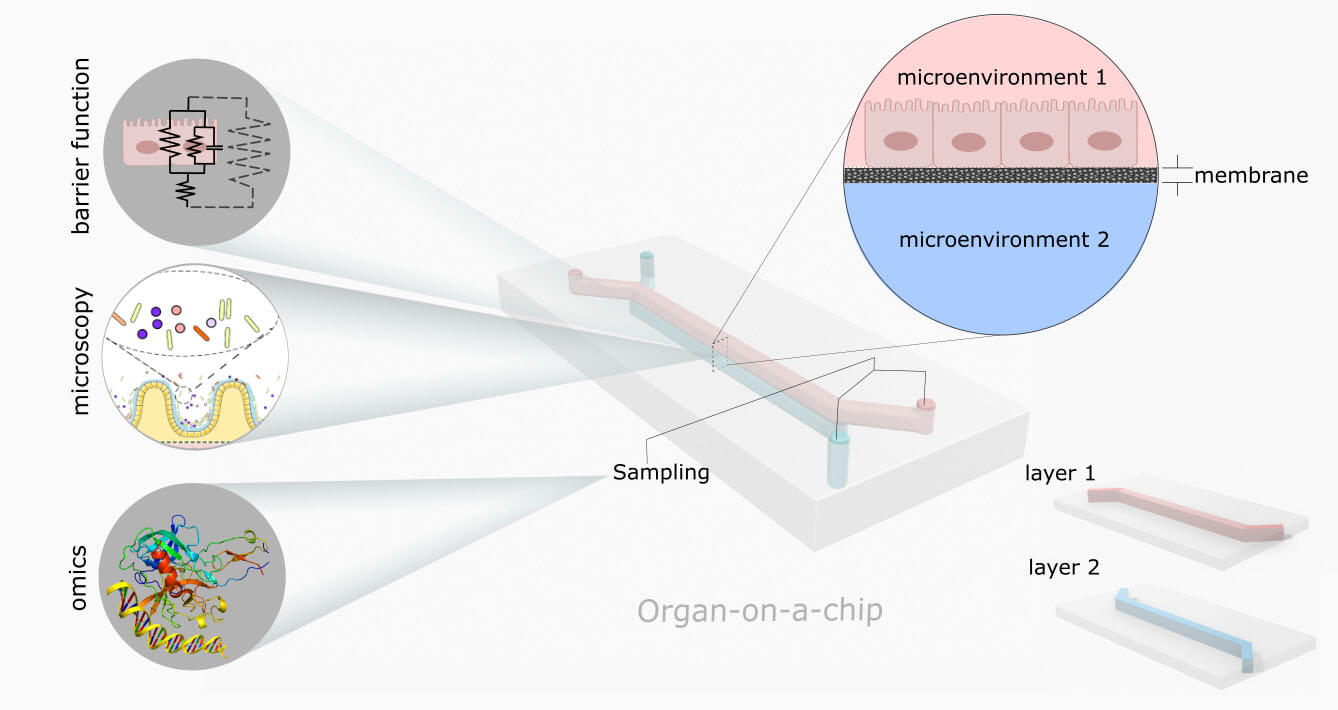WASHINGTON– In recent years, researchers have been racing to better understand the gut and how it affects human health. Organ-on-a-chip devices might make it a lot easier, allowing scientists to bypass the need for time and money-consuming clinical trials to carry out investigations all together. Now, researchers are developing a gut microbiome-on-a-chip that could open new doors in the burgeoning field of gut-based medicine.
The gut is one of the most intricate systems in the body. Scientists continue to reveal more and more about the many far-reaching effects that the gut has on the entire body. It has millions, and even trillions, of bacteria that grow and interact with every single thing that we eat and drink. When there’s an imbalance in gut bacteria, the system has been linked to GI conditions like inflammatory bowel disease and irritable bowel syndrome.
The consequences may even stem beyond just the gut, playing roles in obesity, diabetes, asthma, and even anxiety and depression. This is why creating evidence-based and scientifically-valid gut models is so important for research and development.
“Medical research is currently facing major hurdles, both in terms of understanding the basic science governing the function of human organs and the research and development of new drugs and therapeutics,” said author Amin Valiei, in a media release. “Access to valid models of human organs that can be studied conveniently in the lab can significantly accelerate scientific discoveries and the development of new medications.”
These small gadgets work by utilizing small micro-channels where with cells and tissues interact with controlled nutrients. By tightly regulating the cellular environment, it helps to create realistic models of tissue.

Typically, modeling the microbiome is no easy task because of how uniquely different they can be. Gut-on-a-chip devices are really helpful for this, as they’re able to simulate the main environmental properties like the gut’s anaerobic atmosphere, fluid flow, and contraction/relaxation pulses. By putting intestinal cells in this environment, they will grow to closely resemble the human gut. This could be huge, because it would also significantly reduce the need for animal models too.
“Recent gut-on-a-chip models have demonstrated success in maintaining a viable coculture of the human intestinal cells and the microbiome for a few days and even up to weeks,” says Valiei. “This opens new ways to analyze the microbiome under biologically relevant conditions.”
There are even disease models and drug studies using this technology already, the researchers say. This means the model is really promising for the gut research world!
“Its unique capabilities make the organ-on-a-chip apt for plenty of research investigations in the future,” adds Valiei.
The findings are published in the journal APL Bioengineering.
